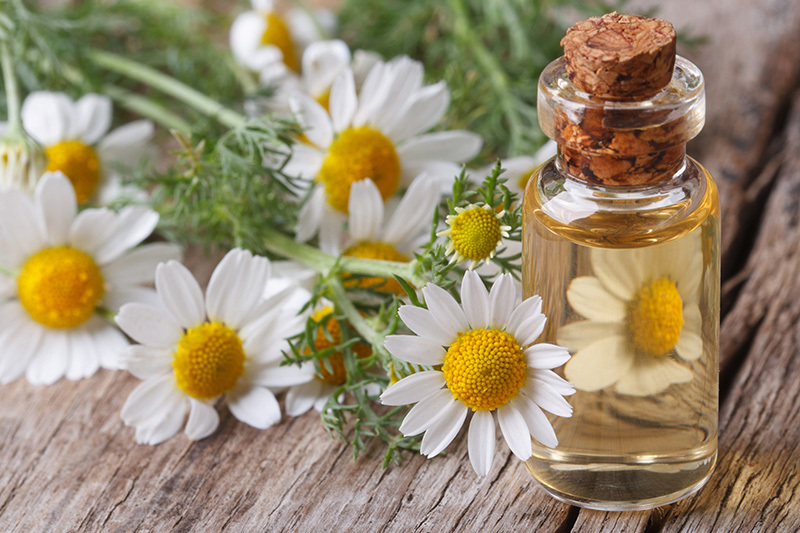The Delicate Balance of Orchid Care: A Botanical Journey
Posted on 13/08/2025
The Delicate Balance of Orchid Care: A Botanical Journey
Orchids have captivated plant enthusiasts and botanists alike for centuries with their exotic beauty, diversity, and resilience. Yet, the art and science of orchid care remains an intricate dance--a careful equilibrium that challenges even seasoned plant lovers. Embark on a botanical journey as we uncover the secrets to nurturing these extraordinary plants, ensuring that your orchid thrives and blooms year after year.
Understanding Orchids: A Brief Botanical Overview
The orchid family (Orchidaceae) is one of the largest and most diverse plant families, boasting over 25,000 species and more than 100,000 hybrids. Orchids are found on every continent except Antarctica, thriving in habitats ranging from tropical rainforests to arid deserts. Their adaptability is remarkable, yet their care often puzzles growers. What makes orchids so unique?
- Epiphytic Nature: Many orchids grow on trees, extracting moisture and nutrients from the air and rain.
- Tuberous Roots: Some varieties possess swollen roots for water storage, helping them survive in harsh conditions.
- Bilateral Symmetry: Their flowers mirror perfect balance, an inspiration for plant lovers and designers alike.
Knowing these basics is essential for mastering orchid plant care and understanding how to recreate their natural environment indoors.

The Fundamentals of Orchid Plant Care
1. The Right Light: Sunshine in Moderation
Light is the most crucial aspect of successful orchid care. Unlike many houseplants, orchids need indirect, filtered light to thrive.
- Too little light: Leaves become dark green and inhibit flowering.
- Too much light: Leaves may yellow, burn, or develop unsightly spots.
- Just Enough: Most orchids prefer east or south-facing windows with sheer curtains to diffuse direct rays.
A practical tip: Phalaenopsis (commonly called "moth orchids") do best in bright, indirect sunlight, making them ideal houseplants.
2. Water Wisely: Mastering the Moisture Equation
One of the most common mistakes in orchid plant care is improper watering. Finding the perfect balance is key:
- Overwatering: Can lead to root rot, the nemesis of thriving orchids.
- Underwatering: Causes shriveled roots and limp leaves.
- The Goldilocks Rule: Water when the potting medium is almost dry--usually once per week, but frequency varies by species and environment.
Pro Tip: Always use lukewarm water and let it drain completely--orchids hate "wet feet." Consider using rainwater or distilled water to avoid mineral buildup.
3. Humidity: Creating a Tropical Microclimate
Most orchids hail from humid environments. Maintaining adequate humidity indoors--ideally between 40% and 60%--can make a world of difference.
- Humidity Trays: Place a tray filled with pebbles and water beneath the pot.
- Grouping: Cluster plants together to create a naturally moister microclimate.
- Misting: Lightly mist leaves in the morning, taking care not to let water sit in the leaf axils.
Bonus Tip: Avoid placing orchids near heating vents or air conditioners, which can dry the air drastically.
4. Air Circulation: Breathing Room for Roots and Blooms
In their natural habitat, orchids are accustomed to gentle breezes. Stagnant air promotes fungal diseases and pests. Ensure good ventilation by:
- Using oscillating fans: Place near orchids, but away from direct flow to prevent drying out.
- Allowing space: Don't crowd orchids; space pots adequately for airflow.
Healthy airflow is as vital to orchid health as light and moisture.
5. Fertilization: Feeding With a Gentle Hand
Orchids require nutrients, but in moderation. Over-fertilizing can damage roots or inhibit blooming.
- Type: Use a balanced orchid fertilizer with equal parts nitrogen, phosphorus, and potassium.
- Frequency: "Weakly, weekly"--dilute fertilizer to one quarter the recommended strength, and apply during active growth.
- Flush: Rinse the potting medium with plain water monthly to prevent salt buildup.
Patience is key. Stronger isn't always better in orchid plant care!
Repotting and Substrate: The Root of Orchid Success
Choosing the Optimal Potting Medium
Orchids prefer airy, well-draining substrates such as:
- Bark chips (fir or pine)
- Sphagnum moss
- Coconut husk chips
- Perlite and charcoal blends
Avoid regular potting soil--it retains too much moisture, suffocating the roots. Each type of orchid may have different substrate preferences. For example, cymbidiums like a slightly denser medium, while phalaenopsis favor a chunkier mix.
When and How to Repot Orchids
Repot your orchid every 1-2 years, or when:
- The medium breaks down, causing poor drainage
- Roots protrude excessively or are rotting
- The plant has outgrown its pot
How to repot:
- Gently remove the orchid from its pot and shake off old substrate.
- Trim any dead or rotted roots with sterilized scissors.
- Place in a clean pot, spread roots, and fill with fresh substrate.
- Water lightly and keep in a shaded area for a week before returning to normal light.
Orchid Diseases and Pest Management
Even the most careful grower may encounter issues with orchid care. Early detection and prevention are essential for a healthy plant.
Common Orchid Diseases
- Root Rot: Caused by overwatering--trim damaged roots and repot.
- Leaf Spots: Fungal or bacterial infections--treat with a fungicide and improve air circulation.
- Bud Blast: Sudden bud drop, usually stress-related--check watering, light, and temperature.
Pest Problems and Solutions
- Mealybugs: Look for white, cottony masses. Remove manually and use insecticidal soap.
- Aphids: Wash off with water or spray with neem oil.
- Spider Mites: Fine webbing and speckled leaves--boost humidity and wipe leaves.
- Slugs and Snails: Handpick or use barriers around pots.
Natural pest control and consistent observation are your best allies.
Blooming Secrets: Encouraging Your Orchid to Flower
The journey of caring for orchids culminates in their spectacular blooms--a reward for patience and precision. Yet, many growers find their orchids reluctant to flower. Here's how to encourage blooming:
- Cooler nights: Most orchids need a temperature drop (about 10?F/6?C) at night to trigger flowering.
- Rest period: Some types require a dry rest period after growth to set buds.
- Correct fertilizer: Switch to a "bloom booster" formula (higher phosphorus) before expected flowering season.
- Consistent care: Avoid stress factors; stability promotes blooming.
Remember: Some orchids bloom annually, while others flower multiple times per year. Record your plant's cycle to anticipate the next burst of color.
Life After Bloom: Post-Flowering Care for Orchids
Once the last flower has faded, orchid care continues:
- Do not throw it away! Most orchids will rebloom with the right care.
- Trim the flower spike: On phalaenopsis, cut above a node to encourage side spikes. Other species may require cutting spikes down to the base.
- Resume regular watering and fertilizing to support new growth.
The post-bloom period is ideal for assessing your plant's overall health and making any necessary adjustments to care and environment.
Popular Types of Orchids for Home Growers
- Phalaenopsis Orchids (Moth Orchid): The beginner's favorite for their forgiving nature and long-lasting flowers.
- Cattleya: Known as the "queen of orchids," they offer stunning, fragrant blooms.
- Dendrobium: A diverse genus thriving in varied conditions, with charming sprays of flowers.
- Oncidium (Dancing Lady): Noted for their dancing, butterfly-like clusters and dynamic growth.
- Vanda: Spectacular for their intense colors and exposed root systems (require high humidity).
Start with one of these varieties to embark on your own orchid care journey with confidence.
Orchid Care Through the Seasons
Spring and Summer
- Increase watering and fertilization as orchids enter their active growth phase.
- Monitor for pests, as warm weather brings activity.
- Provide shade to avoid scorching summer sun.
Autumn
- Reduce watering as growth slows.
- Begin cooling night temperatures to induce flower spikes.
Winter
- Watch for drafts and maintain humidity with trays or humidifiers.
- Water less, as orchids enter partial dormancy; overwatering can be fatal.
- Provide supplemental light if needed to compensate for shorter days.
Adapting your care routine throughout the year honors the natural rhythms of orchid growth and flowering.

The Art and Science of Orchid Care: A Lifelong Learning Curve
Caring for orchids is not merely a horticultural task--it is a quest for balance between art and science, patience and observation. The delicate balance of orchid care encompasses:
- Understanding your plant's natural habitat and seasonal cycles
- Adapting care routines to individual needs and changing environments
- Learning from setbacks and celebrating each new growth or bloom
- Connecting with other growers and sharing insights
Each orchid variety offers its own challenges and triumphs, making the journey infinitely rewarding for those willing to learn its secrets. From their amazing adaptations to their spectacular blooms, orchids remind us of the beauty that lies in delicate balance.
Conclusion: Your Botanical Journey Continues
Mastering the art of orchid care is a lifelong adventure that sharpens your skills as a grower and deepens your appreciation for nature's creativity. Whether you are nurturing your very first orchid plant or managing an entire greenhouse collection, remember:
- Observe with patience and curiosity
- Respect the delicate needs of each species
- Enhance your orchid care routine with new techniques and insights
Orchid plant care is not a destination but a journey. Along the way, you will discover not only the extraordinary world of orchids but also your own connection with the living art of botany.
Embrace the balance, and let your botanical journey with orchids inspire a lifetime of growth.
Latest Posts
The Delicate Balance of Orchid Care: A Botanical Journey
Birth Blooms and Their Impact on Your Personality
Revitalize your garden with expert hydrangea insights





